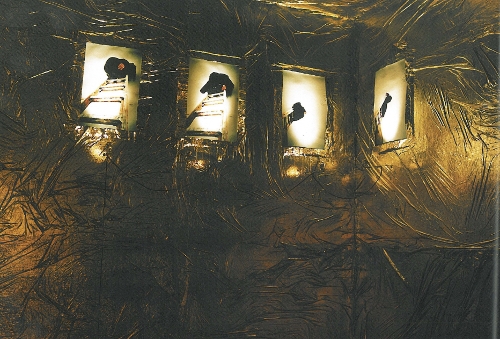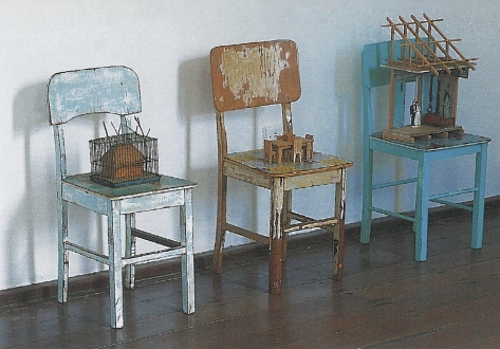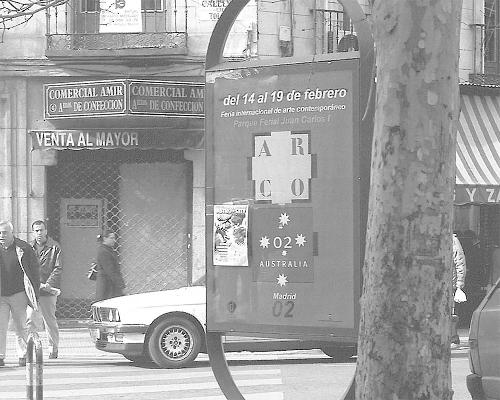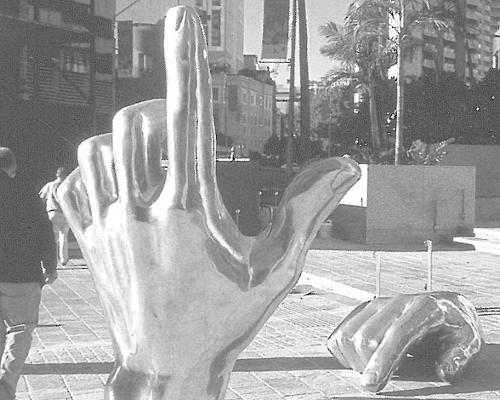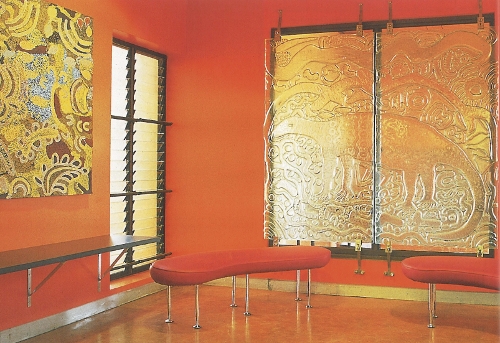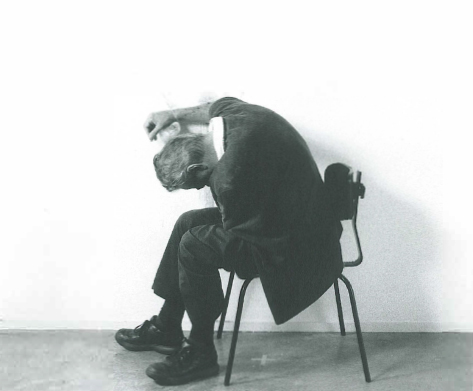
For thirty hours between the 3rd and 4th of May, a man sat in a gallery with his only arm nailed to the wall. As a performance Mike Parr's Malewitsch [A Political Arm] diverges slightly from his previous overly self-referential pieces. The work has a politically motivated social conscience strongly opposed to Australia's treatment of refugees and asylum seekers. It is similar to Parr's previous performances in that the work is a test of the body's limits. However, physical endurance is paralleled by an ethical or moral endurance of 'the dilemma of a culture that is privileged and deeply uncaring at the same time.' By specifically referencing formalism, Parr also criticises the effectiveness of contemporary art as a communicative medium, and adopts the visual language of Kasmir Malevich.
This gesture represents frustration with the Australian position and its implications of political racism. The human rights abuses presently being committed show that since the implementation of the White Australia Policy in the 19th century, recognised in Parr's appropriation of Malevich's White on White, the attitudes of our politicians have barely evolved. His version of the Australian National Dictionary filled with racist, sexist and bigoted terminology suggests that racism has become a part of our language and culture.
Confrontational performance art is Parr's signature style. The encounter is at best a detached 'interaction', characterised by the impossibility of dialogue between artist and audience. Here, the experience of trauma and torture is referenced in masochism. This functions as an alternative language for the communication of that which is beyond verbal or visual.
The tone of the performance shifts between the empathetic and critical. The human presence which involves and unsettles the viewer, invites an immediate, empathetic response when nails and electric drills are passed through living human flesh. However Parr's presence has the effect of loading the work with autobiographical motifs, complicating the audience's experience Are we supposed to empathise with the artist who tortures himself? Or the artist as a symbolic representation of torture and trauma experienced by others?
Ambiguous? Problematic? Patronising? If it were a little less sophisticated I would call it crude empathy. However, with the help of polish and status he escapes this, but only just.
Parr criticises the Australian attitude for being formed around a lack of understanding. As involved as the audience may become, by blindfolding himself and insisting on a clinical silence, Parr deliberately excludes them, turning inward to his own anxiety and frustration. A distancing device was the simultaneous screening of the performance on the Artspace website. The screen obscures our experience of reality through its ability to provide a safe, uninvolved distance that effectively replaces experience. If Parr's performance tells us anything, it is that there is no substitute for reality or witnessing.
In appropriating Malevich's style Par connects its qualities of alienation to a larger socio-political situation. The repression caused by the Russian political regime can be felt through Malevich's total disregard for the audience in favour of a modernist introversion. Performance art is as inaccessible to the wider Australian audience as black and white squares were to Russian peasants.
Being physically nailed to the gallery wall is Parr's way of reattaching himself to the modernist picture plane and to the problems of art lacking in social context and engagement. Although evocative, the experience is minimal and objective. This becomes frighteningly obvious when audience members are physically able to move away from the artist to examine other works in the adjoining room. By concentrating on the notion of presences as absences Parr engages with his subject but not his audience.
Malewitsch (A Political Arm) is weighted with contradictions. It is empathetic yet critical. Mike Parr criticises the elitist and formalist attitude of contemporary art but uses performance, in its obscurity, to deliver the message. And whilst making a political, humanitarian comment he refers empathy back to himself, and his own disability.
Parr's performance holds a place in the realm of established art made meaningful through dense theoretical justification. But do his claims towards an ambitious political purpose help him escape his own criticism? When lives are being put on hold as these immediate problems are consumed by political rhetoric, none of this matters. Perhaps that's why Mike Parr nailed his arm to a wall, covered his eyes, and stopped listening. It's a complicated protest, but the message is clear. This is a simple case of actions speaking louder than words.

